Targeted Drug Delivery
HER2 Targeted Therapy
Tumors over-expressing HER2 are known to be resistant or acquire resistant to current HER2 targeted therapies. We have developed nanoconstructs for targeted delivery of siRNA and chemotherapy for the treatment of cancer that over-express HER2.
Our nanoparticle platform (Pdx-NP™) can load multiple cargo types at once. The HER2-antibody conjugated on the nanoparticles will target HER2 receptors on the cells and enter the cells via endocytosis. High protein silencing efficacy using siRNA loaded on our nanoconstructs has been demonstrated both in vitro cell culture and in mice bearing breast cancer tumor xenograft. Once the HER2 had been silenced, tumor growth reduction in the mice was apparent. Data on this novel nano-therapeutic, T-siHER2-NP, is featured as a cover article in Advanced Functional Materials.
Additionally, our nanoparticle can load chemotherapeutic agent (docetaxel) in addition to HER2 siRNA and anti-HER2 antibody (Trastuzumab), and deliver them to breast tumor at once mirroring the standard treatment of HER2+ breast cancer. By co-delivering these therapeutics, T-siHER2-NP(DTX) can overcome resistance of HER2+ breast cancer to the first-line treatment regimen, while improving toxicity by specifically targeting HER2+ cells. Data on T-siHER2-NP(DTX) is featured as a cover article in Small Journal.
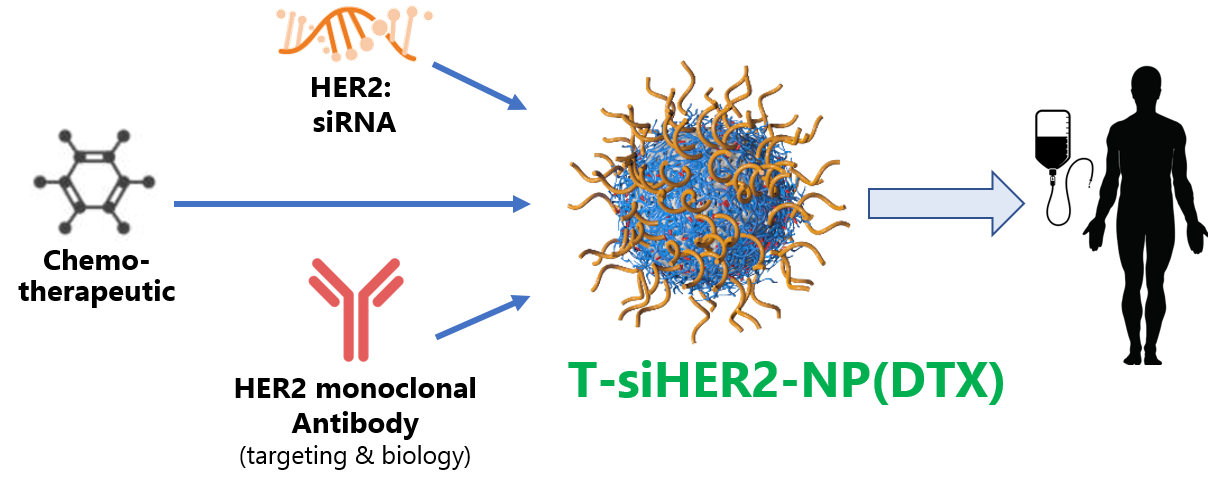
T-siHER2-NP(DTX)
Nanoparticle (Pdx-NP™) loaded with 3 different classes of therapeutics, including HER2 siRNA, docetaxel (chemotherapeutic) and trastuzumab (anti-HER2 antibody).
Cellular specific uptake; efficient HER2 knockdown, and treatment specificity of T-siHER2-NP™
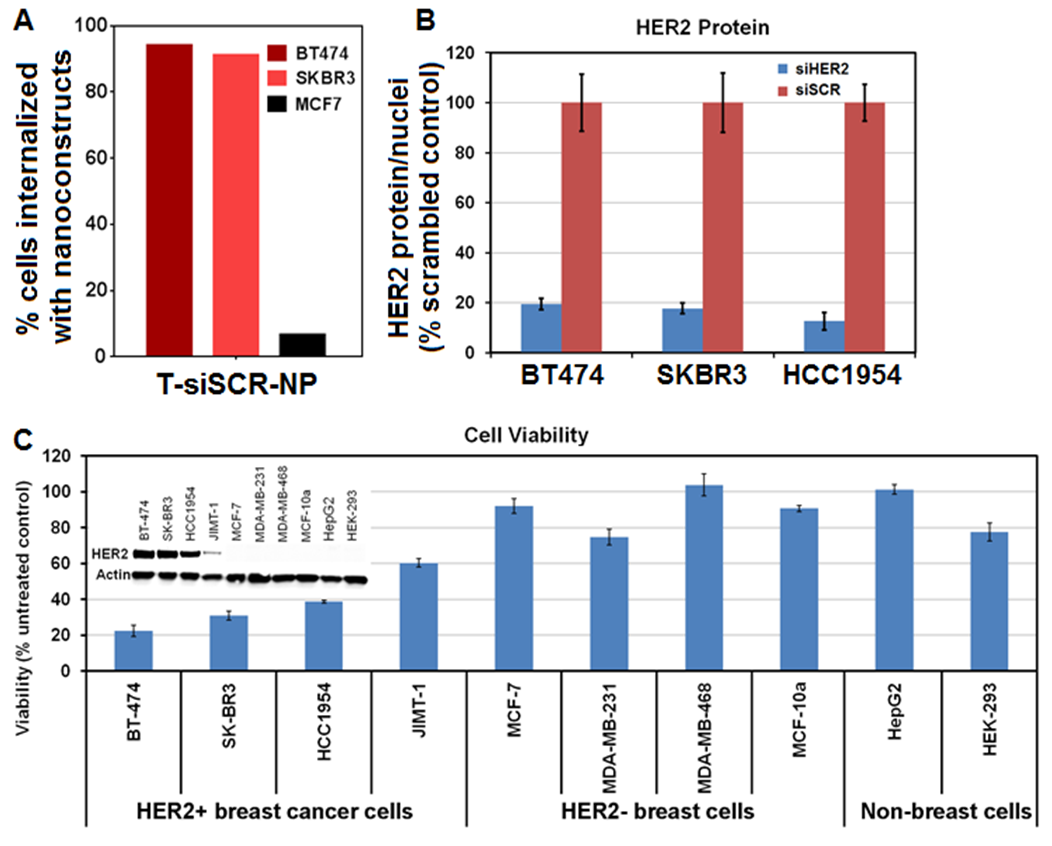
A. Specific uptake to HER2+ cells over low-HER2 cells; B. Knock down >80% of HER2 protein; and C. Specific killing of HER2+ cancer over low HER2 cells
T-siHER2-NP™ can inhibit two resistant HER2+ tumor

- HCC1954 tumors were resistant to Trastuzumab and taxane (A), but responded to T-siHER2-NP™ (B).
- 60% HER2 knock down in tumors after 1 dose (inset of B).
- BT474-TR tumors were resistant to Trastuzumab, but responded to T-siHER2-NP (C)
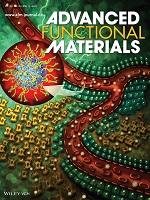
Publications:
Ngamcherdtrakul, W., Morry, J., Gu, S., Castro, D. J., Goodyear, S. M., Sangvanich, T., Reda, M. M., Lee, R., Mihelic, S. A., Beckman, B. L., Hu, Z., Gray, J. W., Yantasee, W. Cationic Polymer Modified Mesoporous Silica Nanoparticles for Targeted siRNA Delivery to HER2+ Breast Cancer. Advanced Functional Materials, 2015, 25(18), 2646-2659. View Cover | View PDF
Gu, S., Hu, Z., Ngamcherdtrakul, W., Castro, D.J., Morry, J., Reda, M., Gray, J.W., Yantasee, W. Therapeutic siRNA for drug-resistant HER2-positive breast cancer. Oncotarget, 2016, 7(12): 14727-14741. | View PDF
Targeted delivery of DTX by T-NP to HER2+ cancer cells enhanced docetaxel’s therapeutic index by about 2-fold.

T-NP(DTX) was two-fold more toxic to HER2+ breast cancer cells than free DTX, but was not more toxic than free DTX to the low-HER2 cell lines (MCF12a and HDFa).
In vivo efficacy of systemic T-siHER2-NP(DTX) in mice bearing HER2+ breast tumors
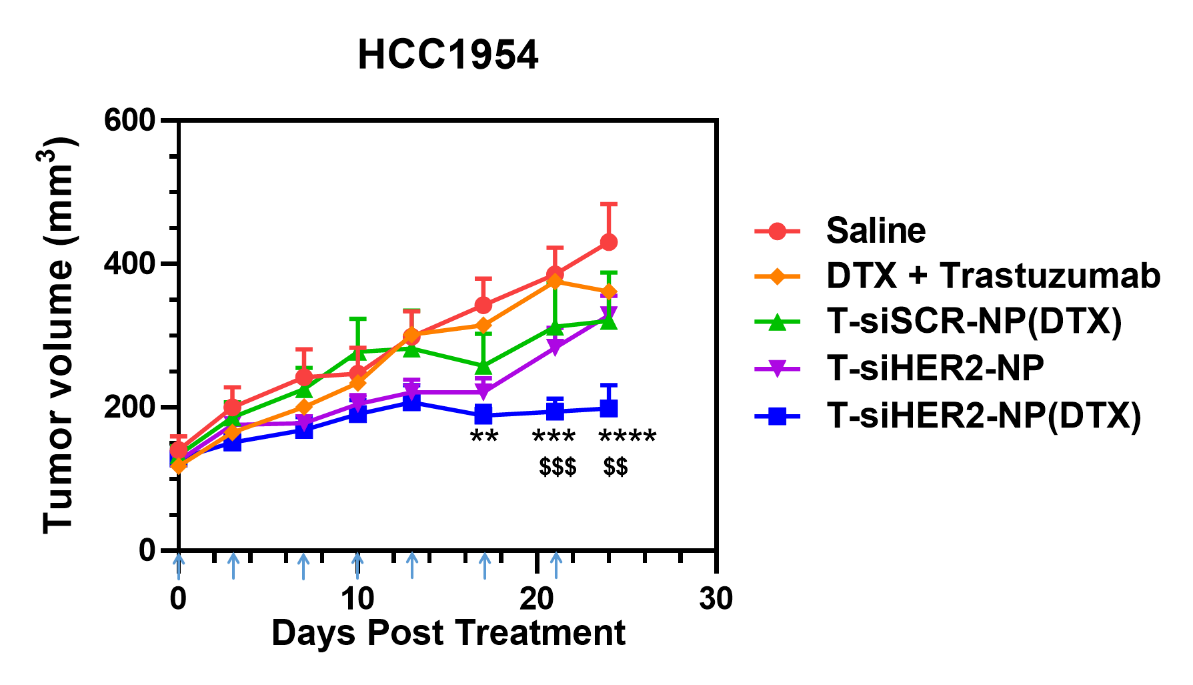
T-siHER2-NP(DTX) is more efficacious at inhibiting tumor growth than the T-NP delivering siHER2 or DTX alone.
T-siHER2-NP(DTX) also outperformed its free drug counterpart (DTX+Trastuzumab) delivered at the same dose.
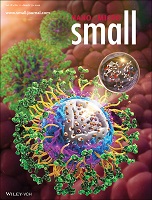
Publication:
Ngamcherdtrakul, W., Bejan, D. S., Cruz-Muñoz, W., Reda, M., Zaidan, H. Y., Siriwon, N., Marshall, S., Wang, R., Nelson, M. A., Rehwaldt, J. P. C., Gray, J. W., Hynynen, K., Yantasee, W., Targeted Nanoparticle for Co-delivery of HER2 siRNA and a Taxane to Mirror the Standard Treatment of HER2+ Breast Cancer: Efficacy in Breast Tumor and Brain Metastasis. Small 2022, 18, 2107550. View Cover | View Article